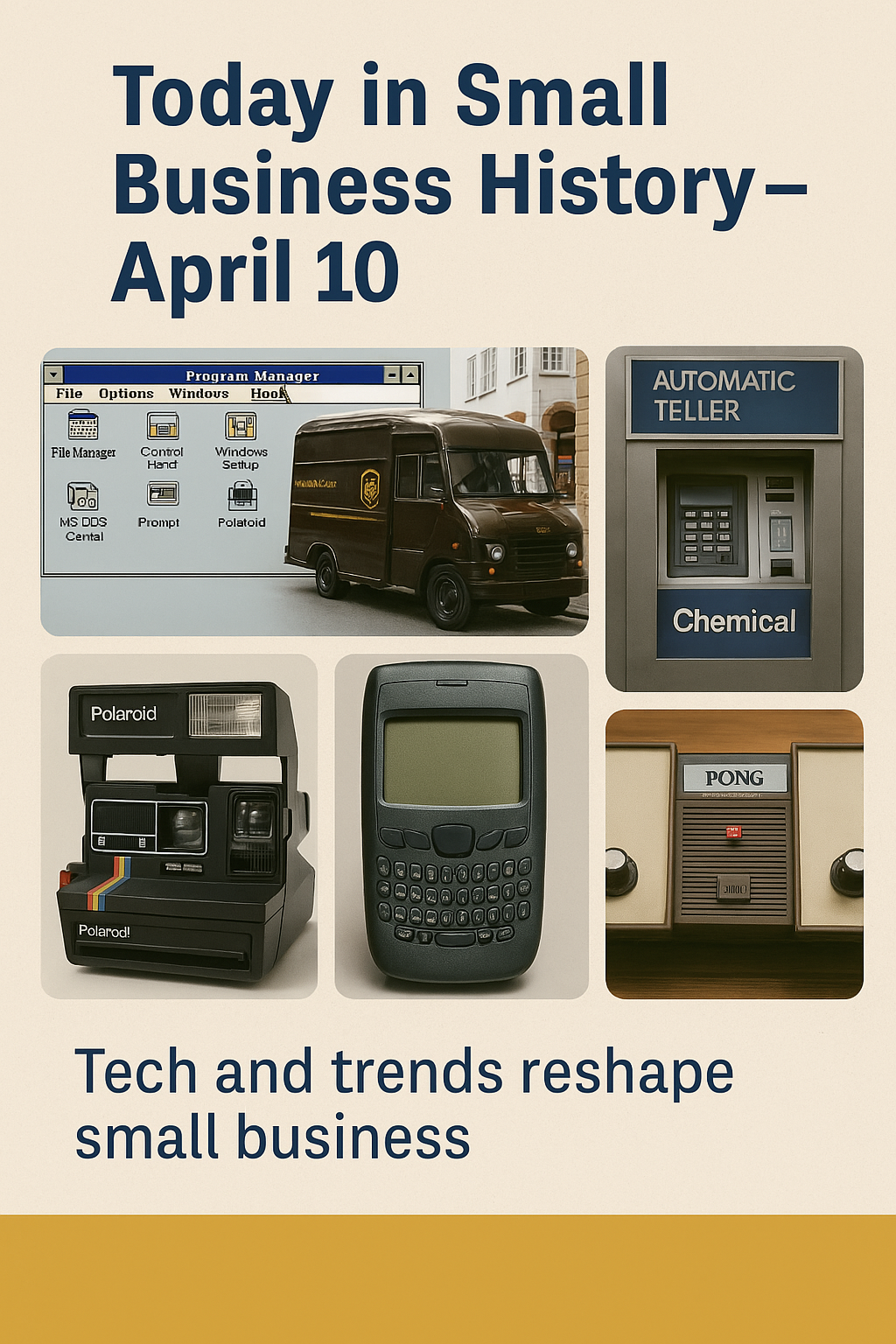
🕰️ April 10: Windows 3.1, UPS’s expansion, and the first ATM revolutionized business, while Polaroid’s failure and BlackBerry’s rise offered key lessons
1. Microsoft Releases Windows 3.1 (April 6, 1992)
On April 6, 1992, Microsoft released Windows 3.1, introducing a more intuitive interface with improved stability, TrueType fonts, and multimedia support. The system enabled small businesses to adopt digital solutions more effectively, increasing productivity and simplifying operations.
✅ Why It Matters:
Windows 3.1 made graphical user interfaces (GUIs) accessible and intuitive for small businesses. This innovation allowed companies to streamline operations, create professional documents, and improve workflow management.
2. UPS Expands International Service to Germany (1976)
In 1976, United Parcel Service (UPS) expanded its international services to Germany, laying the groundwork for its global logistics network. This milestone helped small businesses access global markets by providing reliable shipping solutions.
✅ Why It Matters:
UPS’s international expansion opened up opportunities for small businesses to engage in global trade. UPS helped entrepreneurs scale their operations beyond domestic boundaries by offering reliable delivery services.
3. First ATMs Installed in New York (September 2, 1969)
On September 2, 1969, Chemical Bank introduced the first automatic teller machine (ATM) in Rockville Centre, New York. This innovation offered 24/7 access to cash, reducing dependence on bank hours and giving small business owners greater financial flexibility.
✅ Why It Matters:
The introduction of ATMs transformed financial transactions by providing round-the-clock access to funds. This convenience empowered small business owners to manage cash flow more efficiently, enabling faster business operations.
4. Polaroid Corporation Files for Bankruptcy (2001)
On October 12, 2001, Polaroid Corporation, a pioneer in instant photography, filed for Chapter 11 bankruptcy protection. The company’s failure to adapt to digital photography led to its decline, offering a cautionary tale for small businesses.
✅ Why It Matters:
Polaroid’s bankruptcy serves as a lesson for small businesses to remain adaptable and embrace emerging technologies. It highlights the importance of innovation in staying competitive in a rapidly changing marketplace.
5. BlackBerry Unveils the BlackBerry 850 (1999)
In 1999, BlackBerry launched the BlackBerry 850, its first mobile device that brought email and internet connectivity to handheld devices. This innovation transformed mobile communication and enhanced business productivity.
✅ Why It Matters:
The BlackBerry 850 gave small business owners mobile access to email and data, improving communication and efficiency. It set the stage for mobile-first business models that have become standard today.
🎮 Bonus: Atari Releases Pong Home Console (1975)
In 1975, Atari released the home version of Pong, igniting the video game industry and introducing an entirely new entertainment category. This launch created opportunities for small developers and entrepreneurs in the gaming space.
✅ Why It Matters:
Pong’s success showed how a simple innovation could lead to the growth of an entire industry. It paved the way for small game developers to enter the market and build thriving businesses.
📚 What This Means for Business:
April 10th highlights key innovations transforming technology, logistics, and communication, offering valuable lessons for small businesses. From BlackBerry and UPS's adaptability to Polaroid's cautionary tale, these milestones underscore the importance of staying ahead of technological trends.
Dr. Ethan Fairbanks, M.B.H. (Master of Business History)
Tags: #Small Business History #Tech Innovation #UPS Expansion #Windows Legacy #ATM Launch #Polaroid Lesson #BlackBerry Success #Gaming Industry

